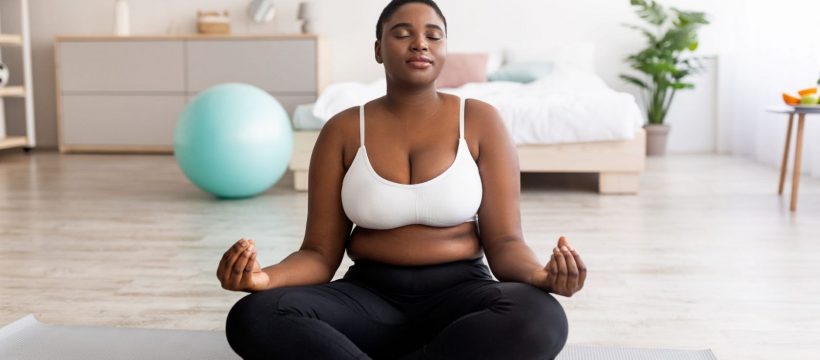Here on Strong Women, we’re not massive fans of new year’s resolutions. But if you do want to boost your fitness in January, then here’s how to choose goals that you’ll actually stick with.
Early sales notifications are flooding your inbox, the sweet taste of Baileys on a weekday still lingers on your tongue, and it’s not just your Slack notifications that are in hibernation mode. That’s right: the new year is upon us and with it comes a load of new fitness plans. Despite having flunked on every new year’s resolution by February, for some reason, we still kid ourselves into thinking that this year will be different.
But, as you likely know, it’s not all that simple. It can become crushingly hard to stay motivated with new commitments as they become, well, less new. Here, we speak with three personal trainers who have seen it all to find out how you can build a January workout plan that lasts all year long.
You may also like
Yoga every day: “How Yoga with Adriene’s 30-day challenge helped me make the habit stick”
Learn a skill
Yanar Alkayat, personal trainer, London
“Where most people fall down in workout regimes is that there’s no progression. If people don’t see that they’re making improvements, they’re not inspired, and they’re not motivated,” says London-based CrossFitter, Olympic lifter and personal trainer Yanar Alkayat. The best way to get around this obstacle? Learn a skill.
The first step is to pick something that genuinely interests you. “Do you want to learn to do a barbell squat? Do you want to learn Olympic weight lifting or bodyweight work? With your goal in mind, you can book the right kind of class or find a PT or coach that specialises in that area. Then you are connected to that activity and can introduce milestones and see your improvements,” says Alkayat. “Before you know it, it becomes a hobby instead of something you have to do.”
One great way to stick at skill building, according to the trainer, is to do so as part of a team. “You might rediscover a sport you are interested in – maybe join a hockey or netball team – and then you’ve got that camaraderie of community and team spirit that keeps you coming back for more.”
Most importantly, you should remember that finding a skill you love and want to stick at long term can take time. “If you join a class or a club on a no-commitment setup, then you’ve got nothing to lose. You can just go to that class and give it a go,” she says. “I tried boxing and didn’t like it,” she says. It’s all about trial and error. “There’s a lot of pressure around January. But remember, you can do this at any time of the year.”
Ease yourself into it
Steve Seabrook, personal trainer and life coach, Brighton
“People get an idea in their head; they see a picture, something inspires them to get in shape, or they get some bad news regarding health. They get this great idea of how they’ll work out — but then they rush into it,” says personal trainer and life coach Steve Seabrook.
This all-or-nothing approach to going flat out with training, often paired with changing the way you eat, is not the best way to approach your January fitness plan, he says. “First, choose some basic exercises to learn, and commit to a certain amount of time in the gym each week.” The key is to make slow but steady progression.
Easing yourself into your workout plan by getting your form sorted — because nothing stops a would-be workout regime quicker in its tracks than an injury — and finding time to stretch and recover are also a crucial part of any new plan. “When I show my clients the training first and then slowly drip feed the nutrition side, I see so much more progression,” he says. “So don’t take on too much at once!”
That said, making sure you have a plan and don’t just go with the flow is also key: “Set some goals out, and if you don’t hit them, really think about why and then look to improve the following week.”
Be realistic
Sophie Fairhurst, personal trainer and correct exercise specialist, Norwich
“Women usually go wrong with their January fitness plans by setting their goals too high or with unrealistic expectations. The key is to create a sustainable routine that gives realistic results,” says Sophie Fairhurst, a trainer and specialist in stroke and injury rehabilitation.
Fairhurst uses the SMART technique, which involves setting specific, measurable, achievable, realistic, and time-bound goals. This, she says, is something you should sit down and organise ahead of lacing up your trainers. What is it you want? How can you get it? And is it realistic?
You may also like
“There’s no point in training at the moment” – why you don’t need to have goals to carry on exercising
And if you start to go off track? Don’t panic and abandon your entire plan. “Often clients struggle when they have ‘one bad meal’ or have missed one workout. They get into a cycle of thinking they’ve ruined their progress and give up. The key is to get up the next day, drink your water and get straight back to working towards your goals.”
Crucially, says Fairhurst, being realistic means not depriving yourself in the first place, as this will only lead to derailing your goals in the long run. “If you’ve got a meal out organised, eat what you’d like from the menu. If you fancy some chocolate, have some! You’ll be more successful if you’ve not starved yourself, and you don’t feel like you’re missing out.”
Join the Strong Women Training Club for sustainable, manageable and fun workouts.
Images: Getty
Source: Read Full Article
